Lifeless Planet – Review
by Adam Smith
|
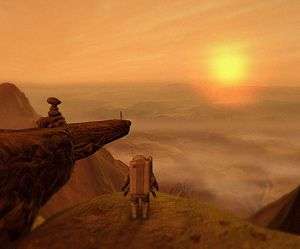 There are few games that complete the challenge of making the player feel small in a big world, while at the same time ensuring that the world does not feel unconquerable. Grand Theft Auto V and The Elder Scrolls V: Skyrim are examples of two games that manage it; now, Lifeless Planet can be added to the list.
There are few games that complete the challenge of making the player feel small in a big world, while at the same time ensuring that the world does not feel unconquerable. Grand Theft Auto V and The Elder Scrolls V: Skyrim are examples of two games that manage it; now, Lifeless Planet can be added to the list.
Lifeless Planet is a puzzle platformer from Stage 2 Studios, and primarily the product of David Board. You play as an American astronaut marooned on an apparently barren planet and must seek out your crew in order to try and escape. After a short while trying to navigate the planet, and narrowly avoiding suffocating due to the lack of oxygen, the unknown astronaut soon comes across what appears to be an abandoned Russian community, complete with flag in the centre of the small village.
The player soon learns, via data logs scattered around the area, that this lifeless planet was part of a Russian plan of attempted colonisation, trying to create a new Soviet Union (as the game takes place approximately around 1974). However, the portal which allowed transport to this planet was not built by Russian engineering, but rather by a more advanced race that travelled there from their own home world. As the Russians became more accustomed to the world, and their attempts to discover the means the ancient alien race used to power their portals, their human presence disrupted the ecosystem so much that it turned the world into the barren planet that the player is now exploring – completely alone, bar the appearance of a mysterious woman with superhuman abilities.
The aura of the world is brilliantly crafted, especially through its use of the planet’s atmosphere, and the player’s vision is hindered by dust storms and fog, creating a harrowing sense of isolation. Combined with the primary means of navigation around the world – jumping rather than walking, in order to make use of the planet’s gravity – everything in the game from scaling the highest mountains to the smallest of jumps feels exhausting. The player has to accept that, in contrast to the amount of power and control they would normally expect in a game, here they are minuscule and subject to trial by the elements.
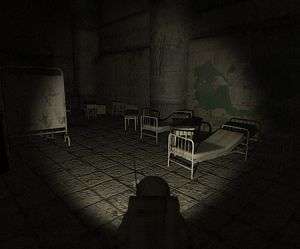 However, I am hesitant to call Lifeless Planet a game, certainly not in the common sense, as it is more of an interactive experience. While there are game-like elements in it, such as the platforming and a claw-grabbing mechanic when the player discovers a robotic arm, there is very little challenge to be had. Mostly, the greatest difficulty the player will face is ensuring that they are jumping in the right direction when all of the scenery looks so similar. That said, the navigation and objective marks are particularly well designed – most of the plot is spent either collecting data packets which have a soft, white glow to them, or following the mysterious girl who helpfully leaves green patches on the ground that the player can follow. This gives a feeling of not being alone, while simultaneously being almost hopelessly lost.
However, I am hesitant to call Lifeless Planet a game, certainly not in the common sense, as it is more of an interactive experience. While there are game-like elements in it, such as the platforming and a claw-grabbing mechanic when the player discovers a robotic arm, there is very little challenge to be had. Mostly, the greatest difficulty the player will face is ensuring that they are jumping in the right direction when all of the scenery looks so similar. That said, the navigation and objective marks are particularly well designed – most of the plot is spent either collecting data packets which have a soft, white glow to them, or following the mysterious girl who helpfully leaves green patches on the ground that the player can follow. This gives a feeling of not being alone, while simultaneously being almost hopelessly lost.
The soundtrack is also particularly notable. For the majority of the first half of the game, there was no soundtrack. All the player had for audible accompaniment were the sounds of the wind and their own footsteps. Yet as soon as the player unlocks the ability to jump higher, and for longer, through better manipulation of the jet pack that allows the player to jump, the music suddenly rises and encourages the player to really explore the planet and empathise with the sense of awe that the astronaut must feel, on some level, being the only human on this incredible planet.
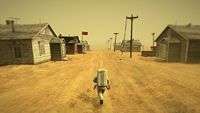 |
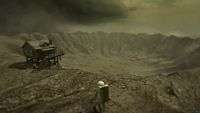 |
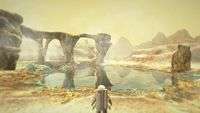 |
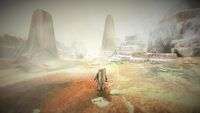 |
 |
 |
Unfortunately, the game does have some issues. While the planet’s sprawling design is great, narratively it does mean that some players will end up walking in circles – actively reducing their instinct to explore the game. Occasionally, the player will become stuck in a wall, or glitch through a tree branch, which breaks the immersion of the game. In an experience focused entirely on isolation, this is a terrible reality check. A B-story about the astronaut and his wife is resolved a little too underwhelmingly, especially considering how much it was set up in the beginning of the game.
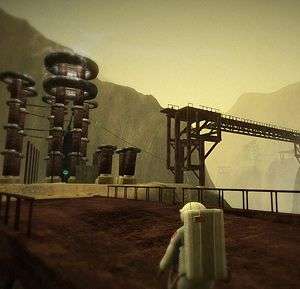 This feels like it was very much designed as “story first, gameplay second”, and while that’s not necessarily a bad thing if the story is good enough, I don’t think that it is the case with Lifeless Planet. It’s good; but it’s not good enough. Especially with the number of instadeaths that the player will be dealing with when they try and jet pack their way onto a surface that doesn’t exist. No amount of brilliant writing can make up for that irritation.
This feels like it was very much designed as “story first, gameplay second”, and while that’s not necessarily a bad thing if the story is good enough, I don’t think that it is the case with Lifeless Planet. It’s good; but it’s not good enough. Especially with the number of instadeaths that the player will be dealing with when they try and jet pack their way onto a surface that doesn’t exist. No amount of brilliant writing can make up for that irritation.
Lifeless Planet is a good start for Stage 2 Studios, particularly for a company that is focused primarily on simulations. With some slightly better writing, and starting the game while thinking about the mechanics rather than ending the game design with them, Lifeless Planet could be a really impressive story which had the potential to eventually become a new Limbo or Journey. At best, it’s a slightly above-par walk in a park that has a somewhat more interesting atmosphere.
Pros- Interesting narrative
- Brilliant atmosphere
- Flawed gameplay
- Storyline is not as solid as the game needs it to be
- Instadeath feature can become annoying
Lifeless Planet is an interactive experience that is impressive through its exploration of the theme of isolation; however, because of its lacklustre gameplay, the experience falls flat and could leave the player somewhat disappointed by the six (on average) hours they put into it.
Last five articles by Adam Smith
- Best of 2014 - Comedy in Videogames
- Fates Forever - Review
- Lifeless Planet - Review
- Transistor - Review
- Comedy in Video Games

















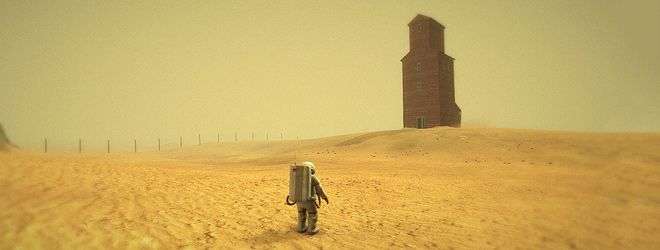






There are no comments, yet.
Why don’t you be the first? Come on, you know you want to!